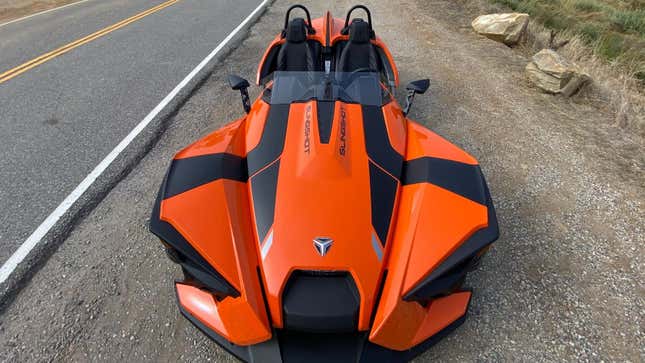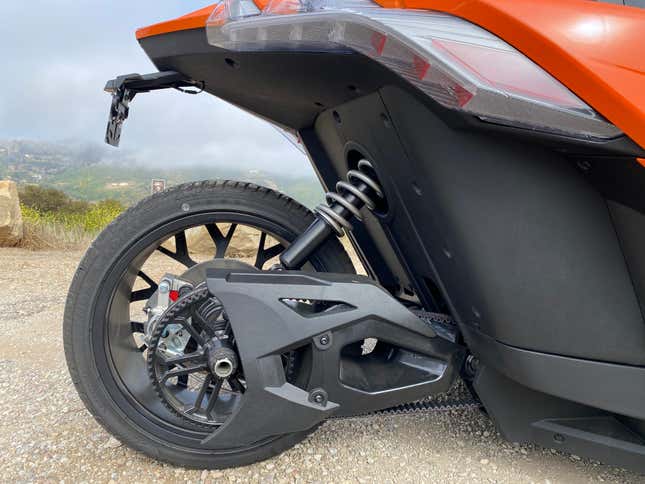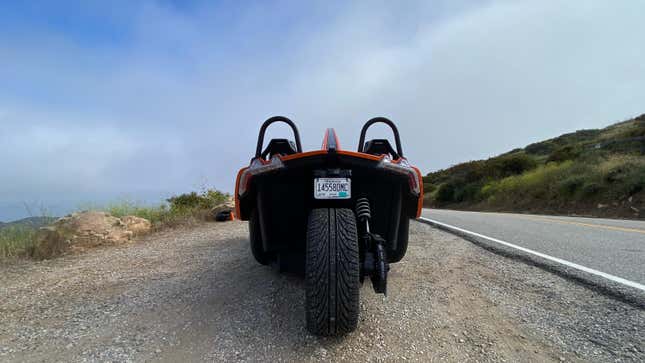Jalopnik is more than just a car blog. We cover and review all kinds of transportation, boats has the trains has motorcyclesbut this criticism is about something much more nebulous: The Polaris Slingshot. You know, that three-wheeled, two-seater, open top tricycle thing with a single belt-driven rear wheel. My apprehensions were great before driving this 2024 Volt Orange Polaris Slingshot SL, and after a week of living with the Slingshot, these apprehensions were validated. Slingshot it’s really not for me.
Full disclosure: I have seen Polaris slingshots terrorize the streets of los angeles I’ve been riding a Polaris Slingshot SL for years, and I can honestly say I never thought I’d ride one, but the generous folks at Polaris changed that. They loaned me a 2024 Volt Orange Polaris Slingshot SL with a five-speed manual transmission and two helmets, and here’s how it went.
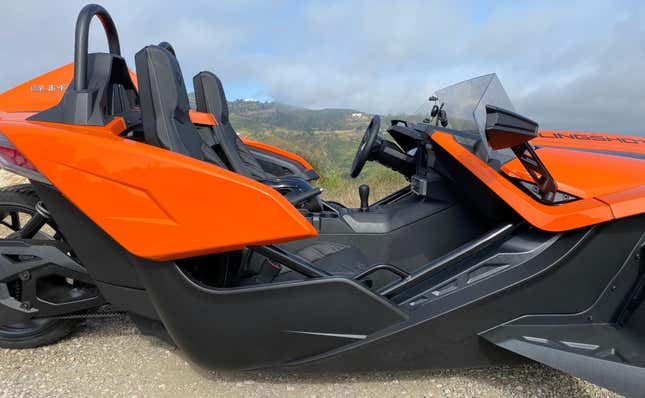
To get into the Slingshot, you have to climb over the tubular structure on the side of the vehicle, because there are no doors. Once seated, there is a surprising amount of legroom, almost enough for my 6-foot-10 frame to fit comfortably. Almost. Of course, headroom isn’t an issue since there’s no roof over your head, but since Polaris requires anyone riding in one of its press cars to wear a helmet, I didn’t get the wind-blown feeling I’d hoped for as a convertible enthusiast. Oddly, the Slingshot’s dual seat belts are anchored in the center of the vehicle, so as the driver, you have to reach over your right shoulder to grab the belt and buckle it on your left side. This decision, combined with the lack of adequate doors and seat bolsters, amplifies the already perilous feeling of riding a Polaris.
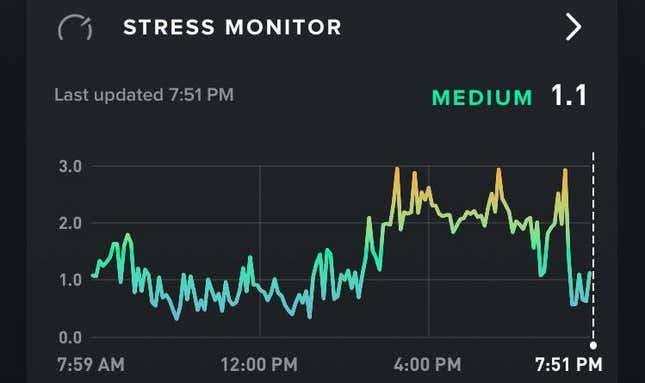
Driving the Slingshot through Los Angeles is a stressful experienceas evidenced by my Whoop fitness watch that records all my rides as high-stress moments. You sit very low to the ground, with no airbags, no doors, and no roof. The engine is violent at the highest point of the word, but gutless until its 8,500-rpm redline where it finally reaches its peak power. The clutch is hard and heavy, the transmission tunnel becomes worryingly soft to the touch while you’re driving, the ride is harsh, and because the Slingshot is so unusually shaped, it’s hard to judge where the vehicle starts and ends. All of these factors contributed to my high stress level behind the Slingshot’s tiny steering wheel, combined with the knowledge that any of the three-row mom cars on the roads of Los Angeles could run me over without me even realizing it.
THE PolarisThe Slingshot SL’s 2.0-liter inline-4 makes 178 horsepower and just 120 pound-feet of torque, the latter of which peaks at 5,500 rpm, and the Slingshot weighs just 1,633 pounds overall, nearly 1,000 pounds less than a Mazda Miata. That should make it a lot of fun to drive, but once the power comes on, it’s simply spinning that single rear-wheel drive, which can make you smile if you don’t need it to connect. And it’s far from fast, and the engine’s behavior is contradictory. You have to push it to the redline to get any power, but the engine is so loud it sounds like it’s going to explode. I also wasn’t a fan of the exhaust sound, as it sounded more like a leaf blower than a car, which might be excusable in a side-by-side, but not in something that’s supposed to be a fun on-road machine.
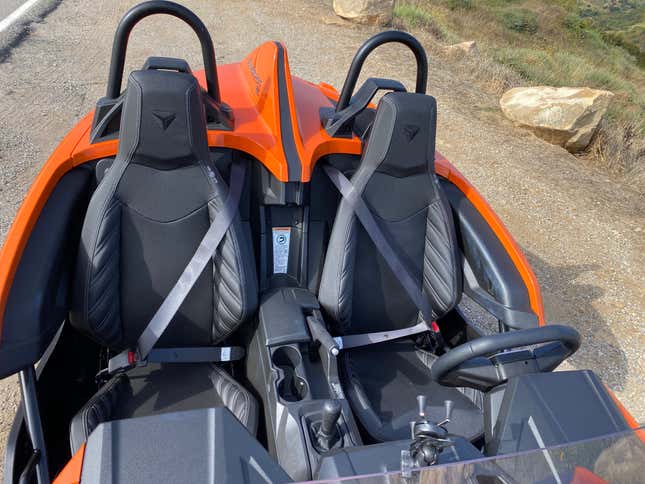
Driving the Slingshot on winding roads was also a painful experience. The route I chose to take through the canyon was occasionally littered with debris, causing the Slingshot to lose traction no matter how fast I was going. In one instance, there was a small strip of dirt in the center of my lane on a turn; I slowed to 10 mph and still nearly slid off the cliff because the rear wheel hit the dirt and lost traction significantly. Thankfully, the Slingshot has traction control and ABS, but the single rear wheel makes it too unstable for me to push it on twisty mountain roads. It’s also unreasonably difficult to judge the width of the thing, since the front is oddly wide and the rear is oddly narrow, so threading the needle becomes an exercise in faith and elevated cortisol levels.
My tester came with the free 5-speed manual transmission, which made the driving experience more engaging but still had its flaws. The transmission is notchy and the shifting is very pleasant, but the high-revving character of the Polaris engine doesn’t match the gear ratios well. First through second gear is fine, but when you shift into third, the revs drop so drastically that you’re out of the power band and the car bogs down.
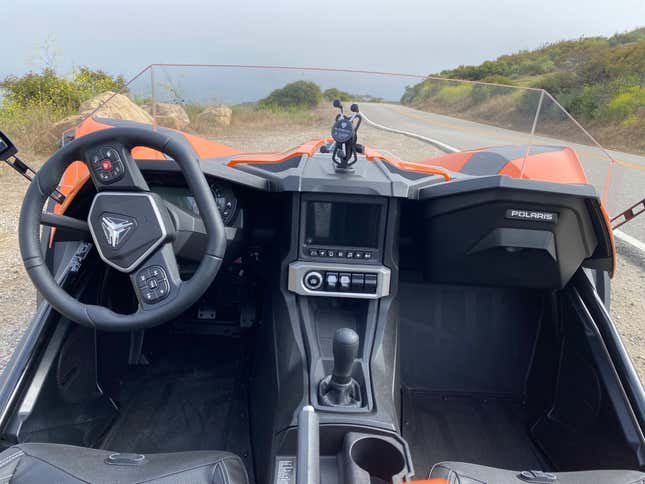
“So what about cruising on the famous ship Pacific Coast Highway”, you might ask, “if it’s not good at cornering, maybe it’s at least a good cruiser?” Nope. There’s no time to relax behind the wheel of the Slingshot. The rear wheel feels like it’s constantly bouncing, requiring countless steering maneuvers to keep it centered in the lane. Wearing a helmet makes the cruising experience even less relaxing. If you’re stuck in traffic, you’ll start baking in the sun, you’ll get dried out by the smelly exhaust, and your left leg will start cramping from the heavy clutch.
The seats in my tester were heated and cooled, which is a nice feature. Unfortunately, when combined with seat belts The front seats are fixed in the middle of the vehicle instead of going over the occupants’ outer shoulder like in every other car. I felt like I was going to slide out of the Slingshot at every turn. Other amenities include Apple CarPlay, which requires a Bluetooth headset to work, so I never tried it.
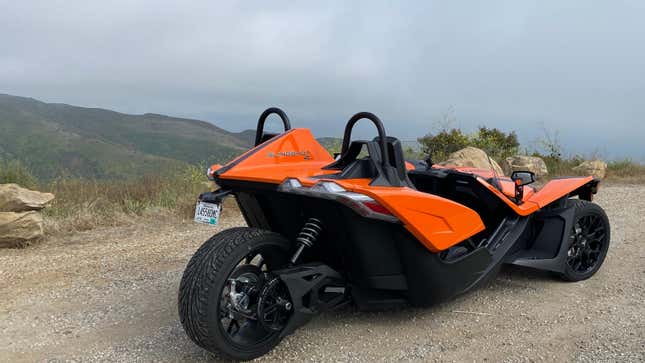
My test vehicle came with minimal options, including heated and cooled seats for $1,629.99, a $100 phone holder, and a $549.99 navigation and sat-nav system. CarPlay The total manufacturer’s suggested retail price (MSRP) is $30,428.97. The least expensive new Slingshot S sells for $21,999 without any options, and the most expensive Slingshot Roush Edition starts at $38,149 before any options. In my opinion, there are a litany of better ways to spend $30,000, like buying hair implants and a facelift to prove to the world you’ve still got it, or buying a used sports car, or $30,000 worth of lottery tickets.
Overall, I’m not a fan of the Polaris Slingshot, but I also don’t think I’m the target audience. Who is the target audience, you ask? I don’t know, but people buy them and seem to love them, so if you swoon when you see a Slingshot drive by, go try one. There’s certainly nothing quite like the experience of riding a Polaris Slingshot, for better or worse.
